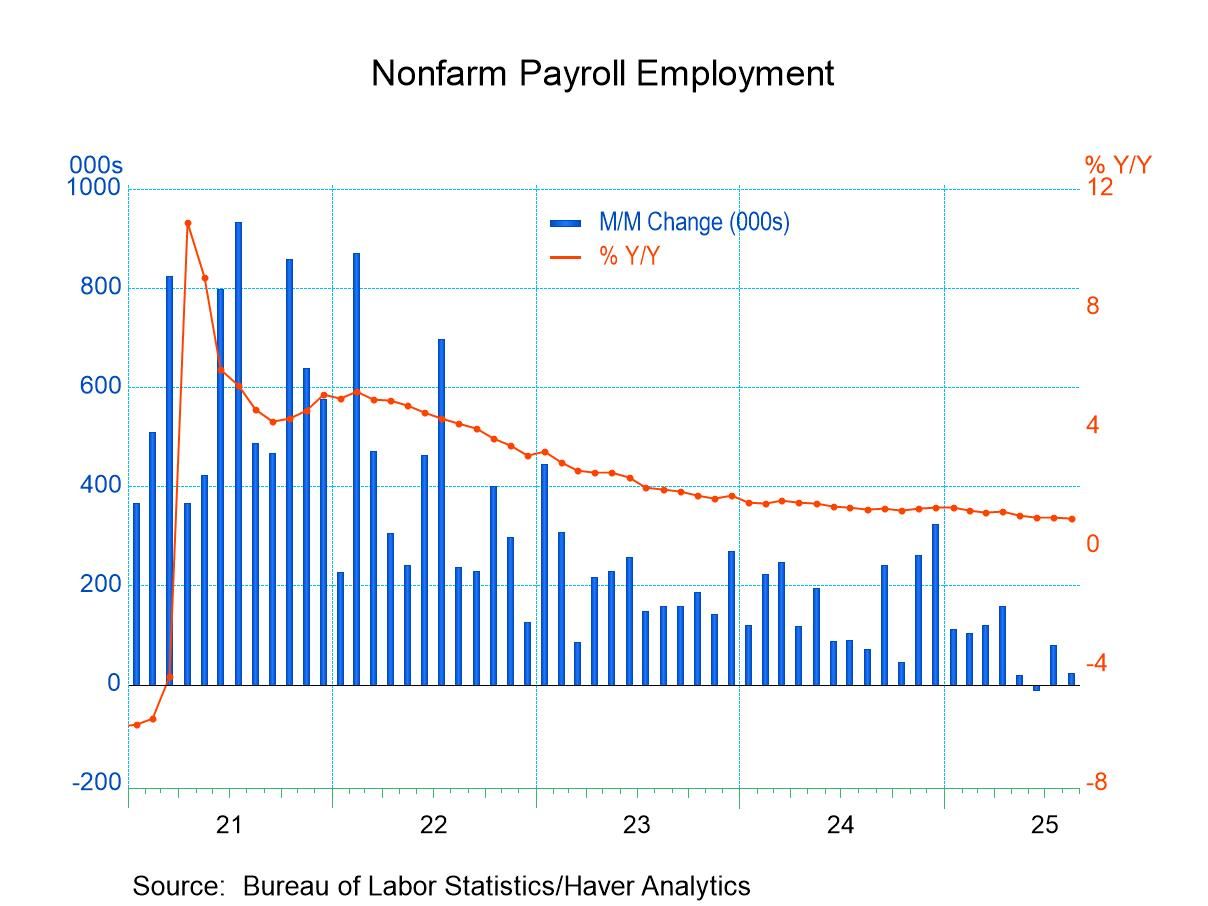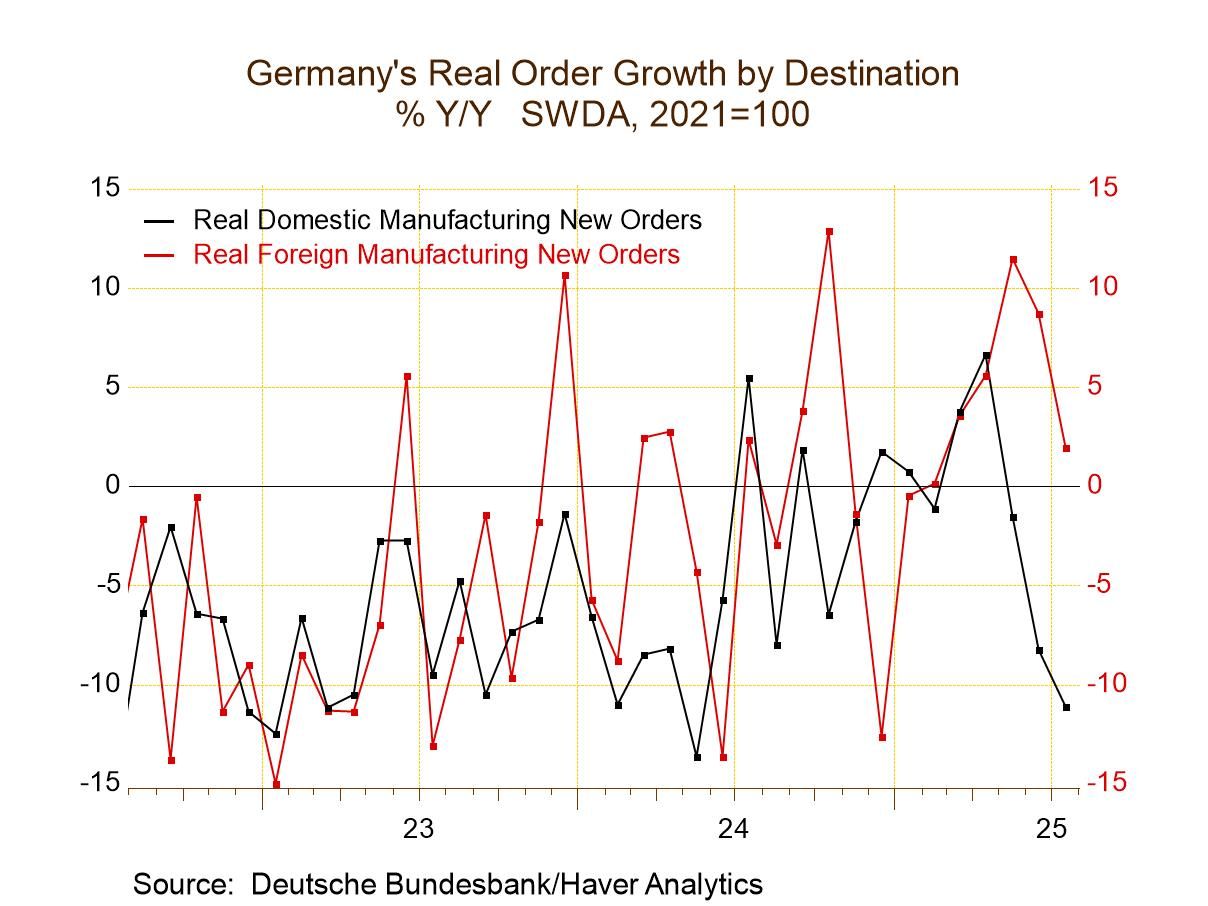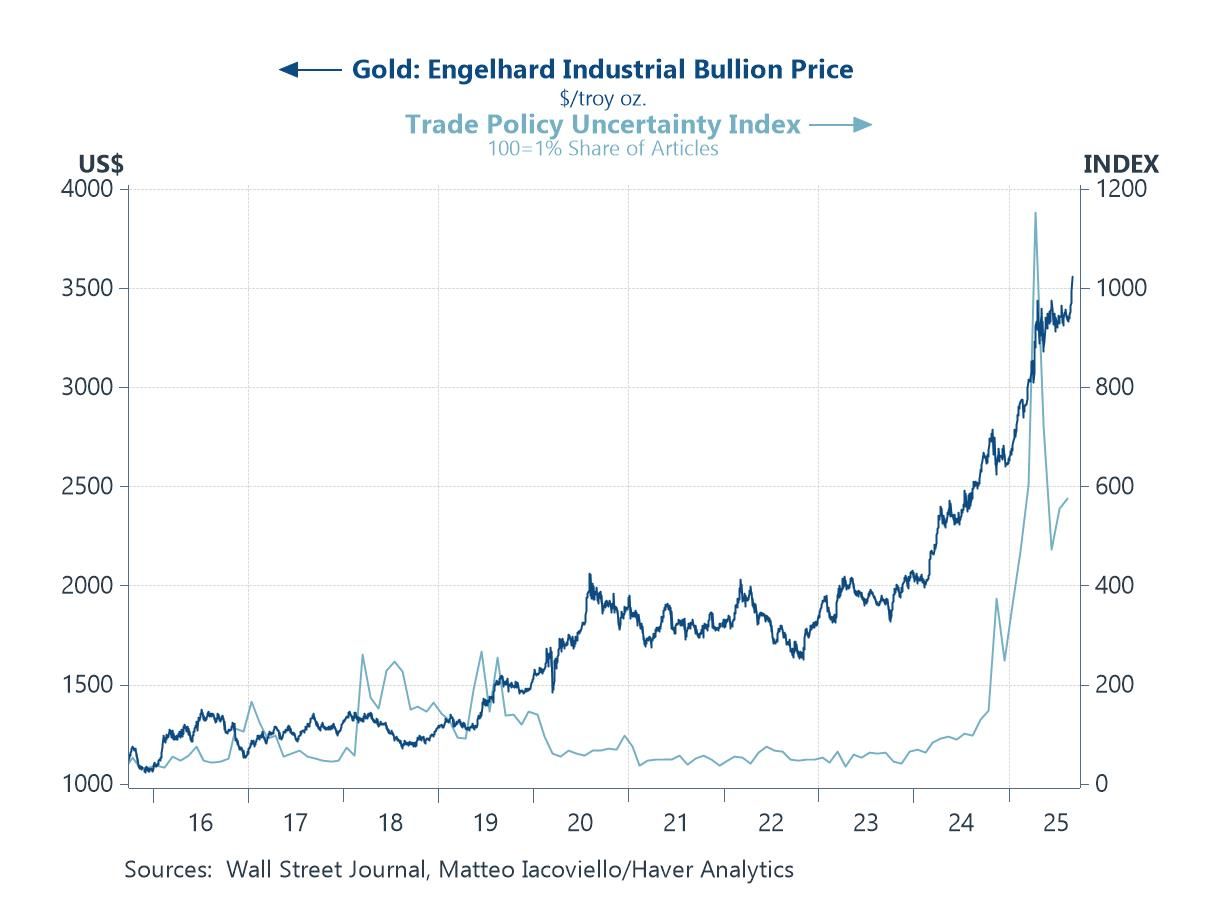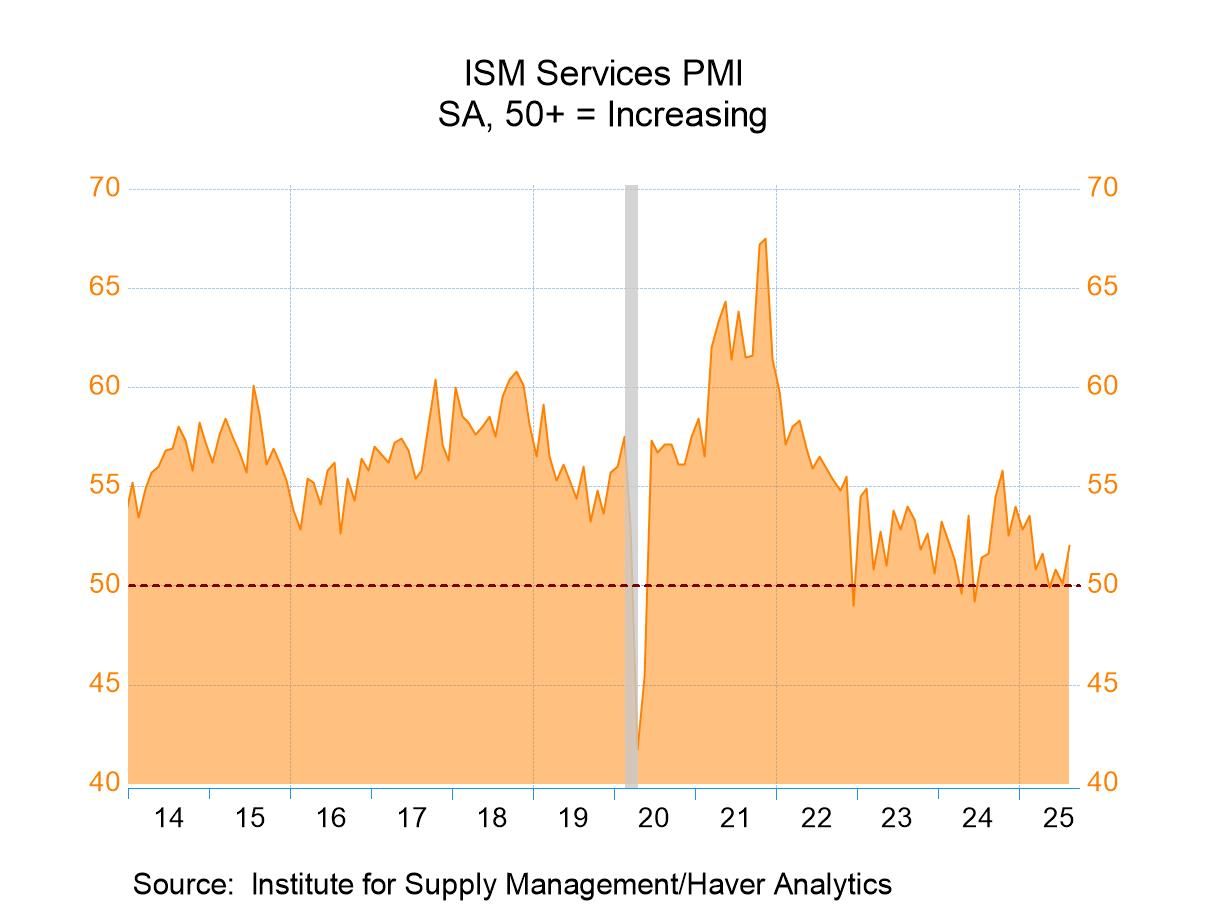 Global| Jul 13 2004
Global| Jul 13 2004U.S. Trade Deficit Eased
by:Tom Moeller
|in:Economy in Brief
Summary
The U.S. foreign trade deficit narrowed in May to $46.0B versus the little revised record deficit of $48.1B a month earlier. Consensus expectations had been for a deficit of $48.3B. Exports rebounded 2.9% to a record high following a [...]
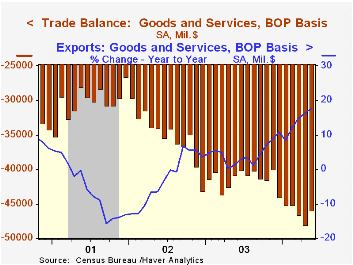
The U.S. foreign trade deficit narrowed in May to $46.0B versus the little revised record deficit of $48.1B a month earlier. Consensus expectations had been for a deficit of $48.3B.
Exports rebounded 2.9% to a record high following a 1.0% decline in April. Notably strong were capital goods exports, up 6.3% (22.1% y/y). Exports of food & beverages rose 2.8% (9.5% y/y) and exports of industrial supplies jumped 6.0% (22.6% y/y). Non-auto consumer goods exports fell slightly for the second month (17.6% y/y).
Total imports rose by 0.4% for the second month. Imports of petroleum products fell for the third consecutive month (-1.9% y/y). Imports of non-petroleum goods rose a modest 0.1% (11.1% y/y) following a 1.5% jump in April.
Imports of capital goods rose 0.2% (14.2% y/y) following a 2.0% April rise. Imports of non-auto consumer goods slumped 3.0% (+11.0% y/y) led by large declines in imports of apparel & household goods, TVs and stereo equipment.
By country, the US trade deficit with China deepened m/m to $12.1.0B ($124.1B in 2003). The US trade deficit with Japan eased to $5.5B ($66.0B in 2003) and the deficit with Western Europe eased to $8.2B ($100.3B in 2003).
| Foreign Trade | May | April | Y/Y | 2003 | 2002 | 2001 |
|---|---|---|---|---|---|---|
| Trade Deficit | $46.0B | $48.1B | $40.8B(5/03) | $496.5B | $421.7B | $362.7B |
| Exports - Goods & Services | 2.9% | -1.0% | 17.6% | 4.6% | -3.1% | -6.0% |
| Imports - Goods & Services | 0.4% | 0.4% | 15.9% | 8.5% | 2.1% | -5.5% |
by Tom Moeller July 13, 2004
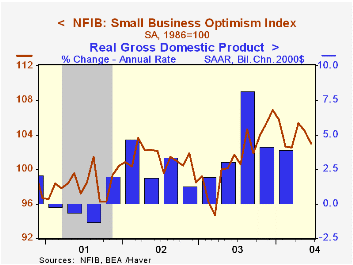
The Small Business Optimism Index published by the National Federation of Independent Business (NFIB) fell 1.4% last month. It was the fifth monthly decline this year.
The percentage of firms expecting the economy to improve fell sharply to 26% from a high of 51% last November. The percent of firms planning to raise capital expenditures also fell sharply but the percentage planning to raise employment rose slightly.
The percentage of firms raising average selling prices jumped to a record high and the percent reporting higher earnings this quarter deteriorated.
During the last ten years there has been a 50% correlation between the level of the NFIB index and the y/y change in real GDP.
About 24 million businesses exist in the United States. Small business creates 80% of all new jobs in America.
| Nat'l Federation of Independent Business | June | May | Y/Y | 2003 | 2002 | 2001 |
|---|---|---|---|---|---|---|
| Small Business Optimism Index (1986=100) | 103.0 | 104.5 | 1.3% | 101.3 | 101.2 | 98.4 |
by Tom Moeller July 13, 2004
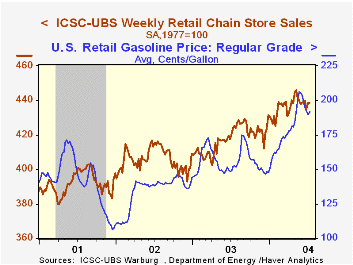
Chain store sales were unchanged last week following the 0.9% rise the prior period, according to the International Council of Shopping Centers (ICSC)-UBS.
So far in July sales are up 0.1% versus the June average.
During the last ten years there has been a 59% correlation between y/y change in chain store sales and the change in non-auto retail sales less gasoline.
The ICSC-UBS retail chain-store sales index is constructed using the same-store sales reported by 78 stores of seven retailers: Dayton Hudson, Federated, Kmart, May, J.C. Penney, Sears and Wal-Mart.
| ICSC-UBS (SA, 1977=100) | 07/10/04 | 07/03/04 | Y/Y | 2003 | 2002 | 2001 |
|---|---|---|---|---|---|---|
| Total Weekly Retail Chain Store Sales | 438.5 | 438.5 | 3.4% | 2.9% | 3.6% | 2.1% |
Tom Moeller
AuthorMore in Author Profile »Prior to joining Haver Analytics in 2000, Mr. Moeller worked as the Economist at Chancellor Capital Management from 1985 to 1999. There, he developed comprehensive economic forecasts and interpreted economic data for equity and fixed income portfolio managers. Also at Chancellor, Mr. Moeller worked as an equity analyst and was responsible for researching and rating companies in the economically sensitive automobile and housing industries for investment in Chancellor’s equity portfolio. Prior to joining Chancellor, Mr. Moeller was an Economist at Citibank from 1979 to 1984. He also analyzed pricing behavior in the metals industry for the Council on Wage and Price Stability in Washington, D.C. In 1999, Mr. Moeller received the award for most accurate forecast from the Forecasters' Club of New York. From 1990 to 1992 he was President of the New York Association for Business Economists. Mr. Moeller earned an M.B.A. in Finance from Fordham University, where he graduated in 1987. He holds a Bachelor of Arts in Economics from George Washington University.



